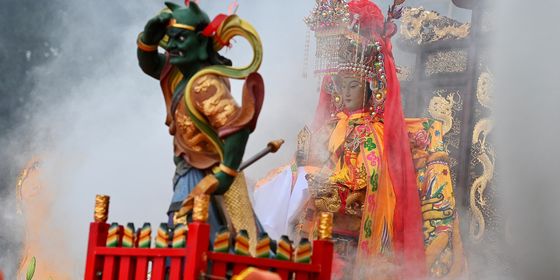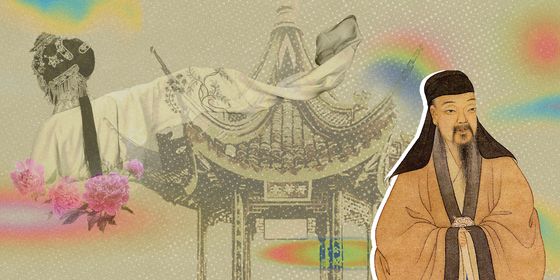Shaoxing has long been a magnet for China's most famous poets, writers, and now tourists
One sunny and breezy day in the late spring of 353, a party was in full swing with 40-some poets, scholars, and artists playing a drinking game by a river in Lanting, or the “Orchid Pavilion,” a hilly southwestern suburb of Shaoxing. They floated cups of wine in the flow of the stream; when it stopped in front of a guest, he had to pick it up, drink, and compose a poem.
A total of 37 poems were written that day, but it was the foreword to the poetry collection by famed calligrapher Wang Xizhi (王羲之), titled “Preface to the Poems Collected from the Orchid Pavilion (《兰亭集序》),” that made this party one of the best known in Chinese literary history. In 324 immortal words, Wang described the event while expressing his passion for life. The work actually contained several characters Wang smeared off or revised, but the naturally-flowing strokes, a product of his outstanding skills and the inspiration of the moment, have led the “Preface” to be widely regarded as the best semi-cursive calligraphy work ever.
Today, visitors can go to the Lanting Scenic Area (兰亭风景区), an elegant garden complex on the former site of the party, which boasts a calligraphy museum, a pavilion, and a pond, all surrounded by thick bamboo forests. In downtown Shaoxing—a world of alleyways, green canals, ancient bridges and graying whitewashed houses, one can also visit a number of scenic sites connected with Wang’s stories and anecdotes from his time there, such as the Bifei Alley (笔飞弄, “Pen-Flying Alley”) and the Tishan Bridge (题扇桥, “Fan-Writing Bridge”).
With over 2,500 years of history, Shaoxing is one of the oldest cities in China. It has long been a center of culture, and home to countless literati, scholars, and social activists. To use Ming (1368 – 1644) scholar Yuan Hongdao’s (袁宏道) words, “there are more celebrities in Shaoxing than fish in water.”
Lu Xun (鲁迅), the sharp-tongued 20th century writer and “China’s conscience,” grew up in the mesmerizing Shaoxing countryside and put his childhood memories down in his widely-read story, “Village Drama (《社戏》).” Visitors can go to Lu Xun’s Former Residence (鲁迅故里), a scenic complex featuring the author’s ancestral home, his childhood garden, the Xianheng Restaurant (咸亨酒家) from his short story, a museum, and more. The former homes of pioneering female rights activist poet Qiu Jin (秋瑾), and educator Cai Yuanpei (蔡元培), are also open for public tours in Shaoxing, and offer a glimpse into the life stories of these trailblazers and the nation’s revolutionary past.
For romantics, Shaoxing represents the lost land “South of the Yangtze River,” or Jiangnan (江南). In a literary sense, Jiangnan is an imagined world that exists in Chinese poetry, always associated with apricot blossoms, spring rain, stone bridges, and waterways. Shaoxing is a city that allows the idea of Jiangnan to run wild in people’s imaginations with ancient bridges, black-canopy boats, and fragrant yellow wine.
Cover image from VCG
Excerpt taken from Rolling with Zhejiang, TWOC’s new booklet on tourism and language in Zhejiang province available in English, French, German, Russian, Korean, and Japanese. Get your digital copy today from our WeChat Store or iTunes Store!













